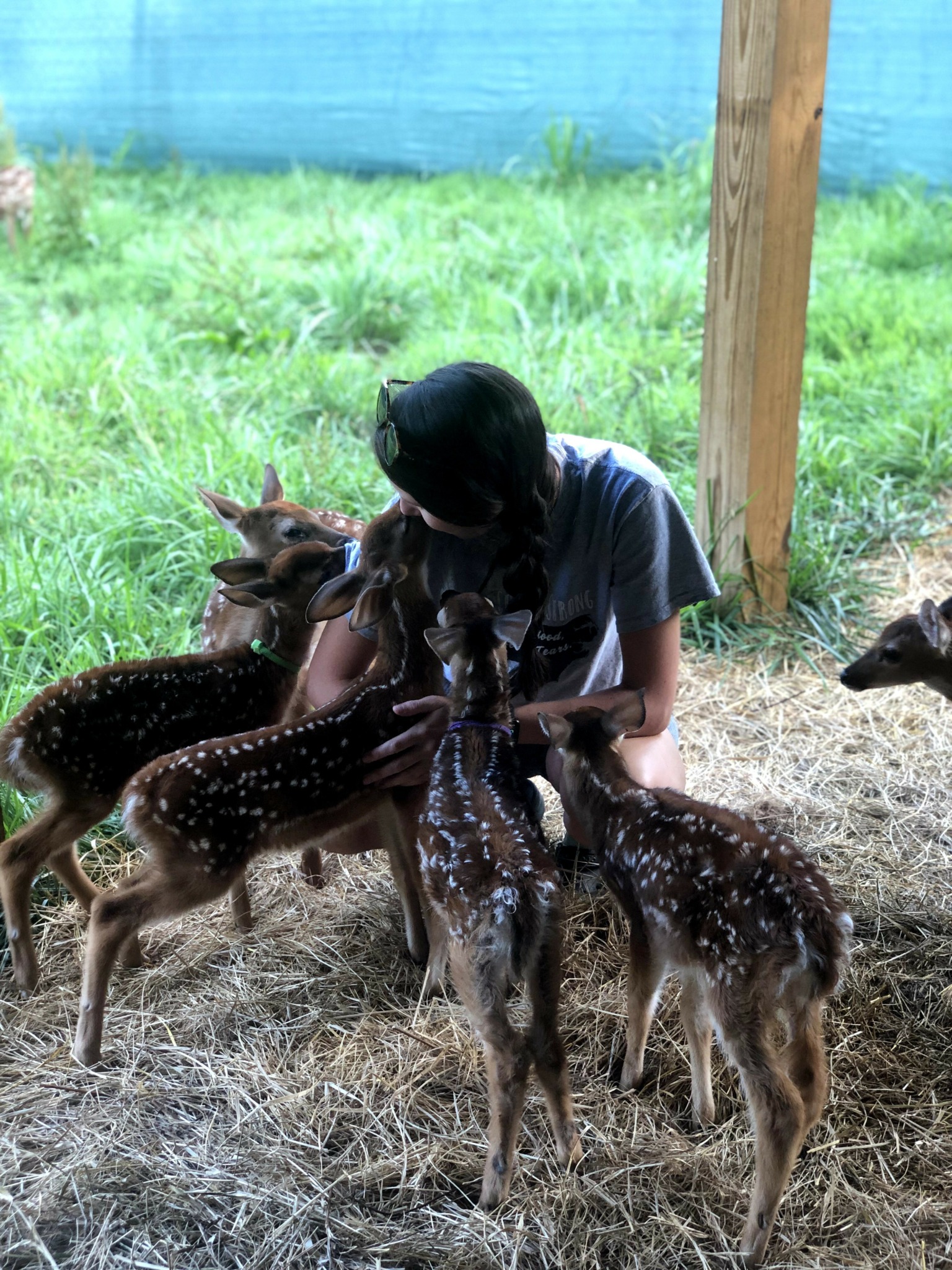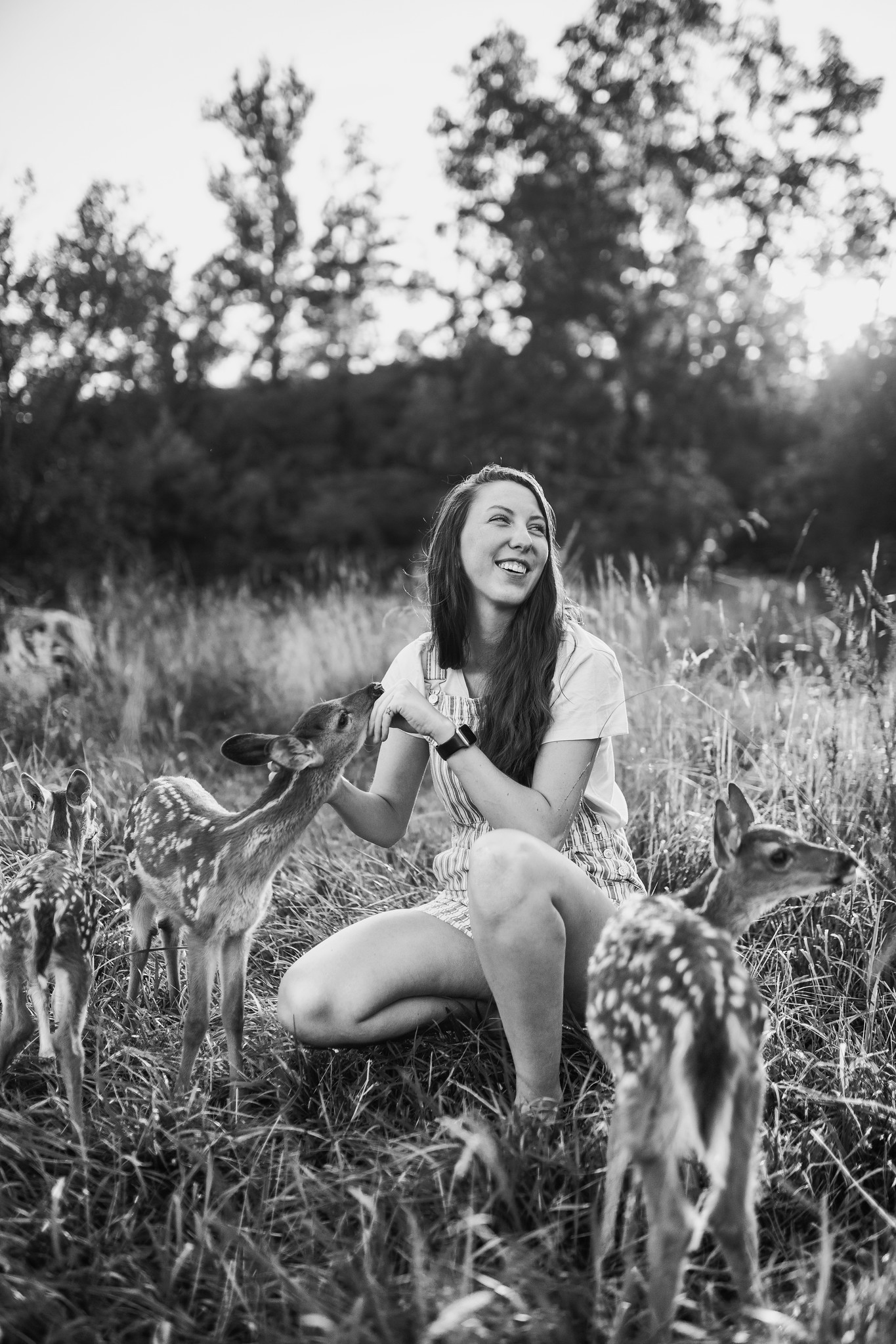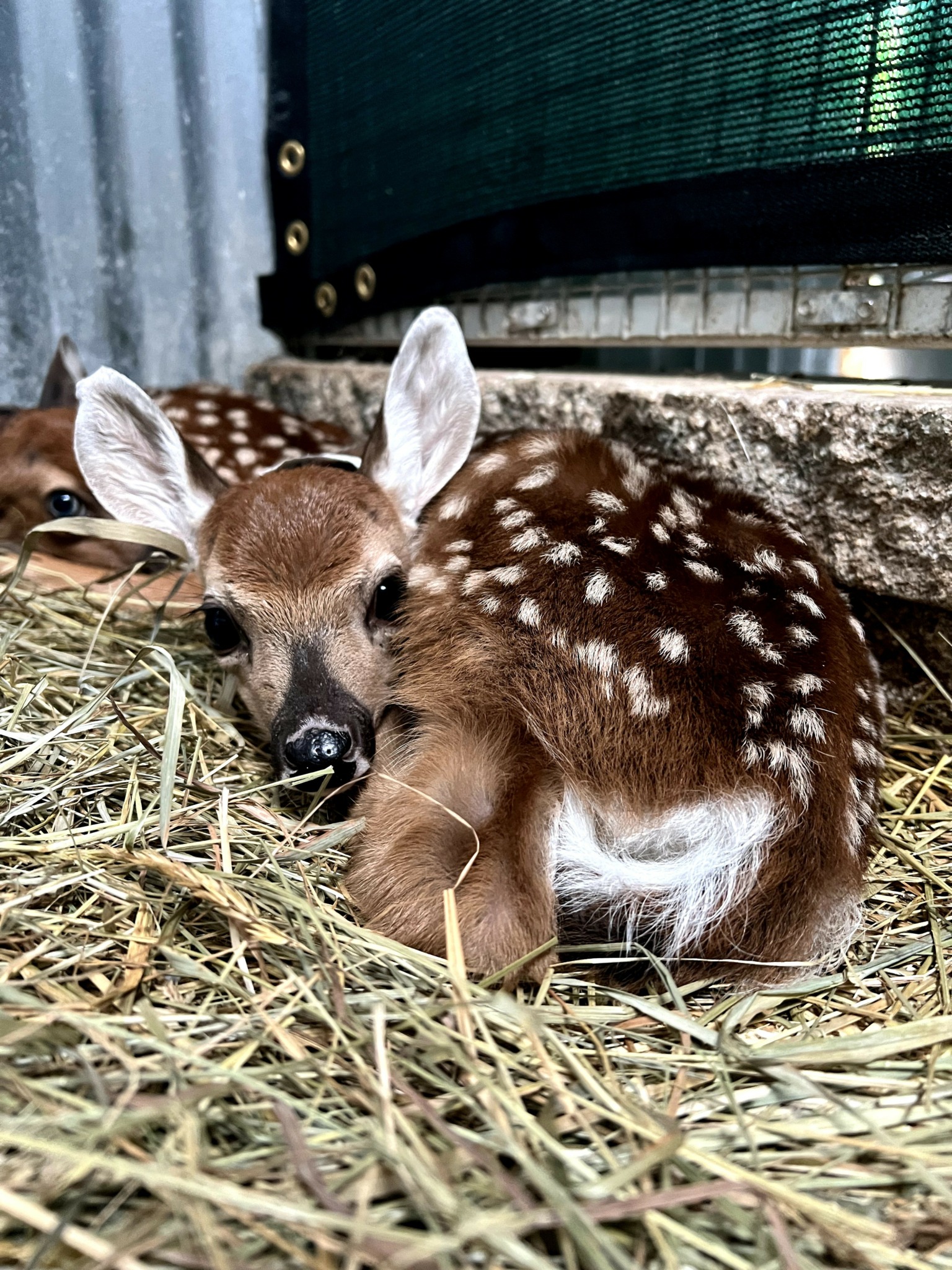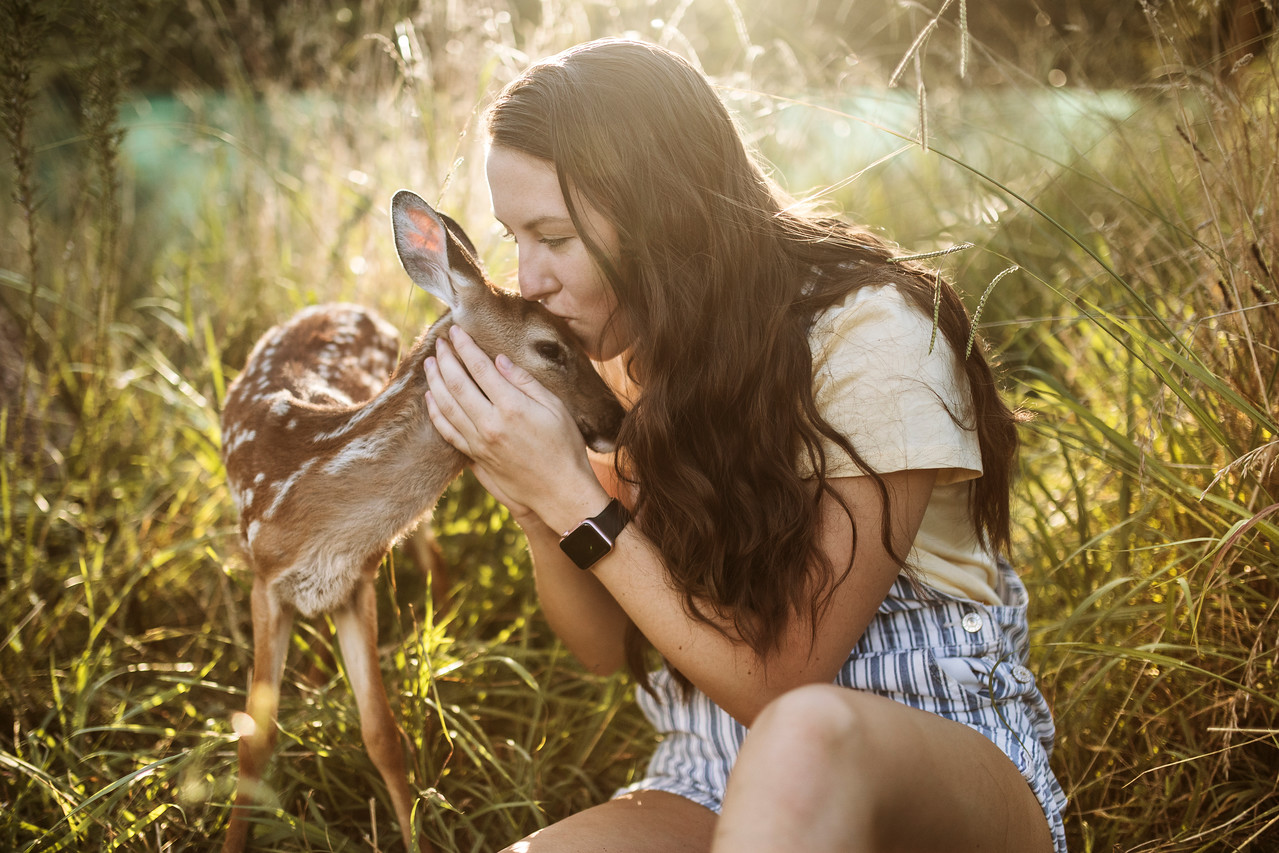We were lucky to catch up with Jocelyn Meadows recently and have shared our conversation below.
Alright, Jocelyn thanks for taking the time to share your stories and insights with us today. It’s always helpful to hear about times when someone’s had to take a risk – how did they think through the decision, why did they take the risk, and what ended up happening. We’d love to hear about a risk you’ve taken.
For years, I lived a life of dual devotion — spending my days teaching fifth graders in a public school classroom and my evenings tending to the wild creatures of western North Carolina. My time was carefully divided: mornings filled with lesson plans and science experiments, afternoons guiding students through discussions about ecosystems and human impact, and evenings spent bottle-feeding orphaned fawns or nursing injured opossums back to health in the quiet corners of borrowed barns. It was a rhythm that filled my cup — challenging, deeply fulfilling, and often exhausting.
But over time, the balance began to tip. The animals kept coming — more and more each year — victims of habitat loss, car accidents, or simply bad luck. What had started as a deeply personal hobby in my spare hours began to grow into something more urgent, more consuming. The fawns were no longer just a few occasional rescues; they were arriving in litters, in need of round-the-clock care. And while my students were still thriving, I began to feel like I was splitting myself in half every day — giving both roles everything I had, but somehow still not enough.
The idea of leaving teaching felt impossible. I loved my job. I loved the kids, the curiosity, the spark in their eyes when a lesson truly clicked. Teaching wasn’t just what I did; it was who I was. It had been my identity, my security, my community. Walking away means letting go of a steady paycheck, a predictable routine, and a place where I’ve always felt I truly belonged. It means stepping into the unknown — no guarantee of success, no roadmap, just a growing belief that the animals need me now in a way I can no longer ignore.
The Edith Allen Wildlife Sanctuary began in those margins — the after-school hours, the weekends, the summers spent crawling through underbrush in search of an injured bird or constructing makeshift enclosures from salvaged wood. It was named after a woman whose compassion and quiet strength shaped who I am, and it grew from the humble hope that perhaps I could do more — not just for wildlife, but for the world I was raising the next generation to care about.
Leaving the classroom is the hardest, riskiest decision I’ve ever made. It means saying goodbye to a community I cherish. It means explaining to students that sometimes, following your passion means stepping into scary places. It means trading the security of a salaried job with summer breaks and a pension for the uncertainty of nonprofit work, fundraising, and living season to season — financially and emotionally.
But I know this dream deserves my whole heart.
Today, I wake up not to a bell schedule, but to the soft bleats of hungry fawns and the rustle of life returning to the forest. At the Edith Allen Wildlife Sanctuary, we rescue, rehabilitate, and release native species — from the smallest turtle to the most fragile deer. We are building something rooted in care, in science, and in community. And we’re dreaming bigger every day — envisioning an educational center where children can learn biology by tracking raccoon prints in the mud, where they can understand empathy by looking into the eyes of a creature that nearly didn’t survive.
In truth, I haven’t stopped teaching. I’ve just changed classrooms.
And every time I open a release pen and watch a healthy animal disappear into the wild, or see a child light up as they meet a creature they’ve only ever seen in a book, I feel the same thing I used to feel at the end of a great school day: this matters. This makes a difference.
And despite all the risk, I know I’m exactly where I’m meant to be. I am in the process of trusting and knowing I can make this work!

Jocelyn, love having you share your insights with us. Before we ask you more questions, maybe you can take a moment to introduce yourself to our readers who might have missed our earlier conversations?
My name is Jocelyn, and I just turned 30. I’m a mom to a joyful, curious 1.5-year-old, a public school teacher of six years, a violinist, and a licensed wildlife rehabilitator. This year, I made the decision to leave the classroom and devote myself full-time to the calling that’s shaped my life for as long as I can remember: caring for injured and orphaned wild animals through the Edith Allen Wildlife Sanctuary in western North Carolina.
My path into this work began early. I grew up surrounded by animals — my parents trained security dogs, and my grandmother worked with wildlife in Florida, handling everything from elephants to anacondas. The day I turned 18, I applied for and received my wildlife rehabilitation license. It wasn’t a new beginning — it was the natural next step in a lifelong connection to animals.
In 2017, after my sister passed away, I wasn’t sure how my family would keep going. In a time of overwhelming grief, caring for animals gave us something to hold onto — a reason to wake up, to nurture, to heal. Wildlife rehabilitation didn’t just save animals that year — it helped save us, too.
For the past several years, I lived a kind of double life: teaching fifth graders during the day and feeding fawns, cleaning enclosures, and responding to emergency calls after hours. I loved teaching — still do — but the sanctuary work kept growing, both in urgency and impact. Eventually, I had to make a choice. It wasn’t easy to walk away from my students or the classroom community I loved, but I knew this mission needed my whole heart.
At Edith Allen Wildlife Sanctuary, we specialize in the rescue, rehabilitation, and release of native species — white-tailed fawns, opossums, turtles, squirrels, and others. We also provide educational outreach and are working toward building a hands-on learning center where kids can explore science and empathy by interacting directly with the natural world. I want children to know what I’ve always known — that life is interconnected, and that caring matters.
What sets our work apart is the way it blends care, science, and soul. I don’t see wildlife rehabilitation as separate from teaching or parenting — it’s all part of a life built on compassion, patience, and the belief that small, quiet acts of care can change the world.
I’m most proud of the growth we’ve achieved from the ground up — from borrowed barns and makeshift enclosures to a sanctuary that’s now giving hundreds of wild animals each year a second chance. I’m proud of every life we’ve saved, every child we’ve inspired, and every supporter who believes that this kind of work is worth doing — even when it’s hard, even when it’s quiet.
And if there’s one thing I hope people take away from my story, it’s this: You don’t need to have it all figured out to make a difference. Whether you’re grieving, growing, or just trying to live with more meaning — there is always room to care. There is always a way to help.
At Edith Allen Wildlife Sanctuary, we aren’t just rescuing animals. We’re creating a space where healing happens — for them, and for us.

What’s a lesson you had to unlearn and what’s the backstory?
One of the hardest lessons I’ve had to unlearn in this work is the belief that I can save them all. When I first started, every injured animal felt like a promise — that if I just tried hard enough, stayed up late enough, found the right formula, built the right enclosure, I could bring them all back.
But wildlife rehabilitation doesn’t always end in release. Sometimes it ends in loss. Sometimes, despite all our efforts, the kindest thing we can offer is comfort in their final hours. And that’s something I’ve come to accept: sometimes, our work is hospice care — and that is enough.
It took time to realize that showing up with gentleness, warmth, and dignity in those moments is just as meaningful as a triumphant release. I used to carry every loss like a failure, but now I understand that being present — fully, compassionately, and without guarantees — is the work.
Letting go of the belief that I can save them all has allowed me to keep going, to care sustainably, and to give each creature what they truly need — not just my effort, but my acceptance.

Is there something you think non-creatives will struggle to understand about your journey as a creative? Maybe you can provide some insight – you never know who might benefit from the enlightenment.
Yes — one thing I think non-creatives (and often non-rehabilitators) can struggle to understand is why we do this work in the first place. I’ve heard it many times: “Why not just let nature take its course?” It’s a question that sounds logical on the surface — but it overlooks a critical truth.
Human impact isn’t “nature.” Cars aren’t nature. Rodenticide isn’t nature. Plastic netting, window strikes, domestic cats, and sprawling new housing developments that destroy habitats — none of that is nature. These are human-made disruptions that injure and displace wildlife every single day. When a fawn is orphaned because its mother was hit by a car, that’s not the “circle of life” — that’s preventable loss. When a turtle is found with its shell shattered by lawn equipment, that’s not natural selection. That’s the result of human choices.
As a wildlife rehabilitator — and honestly, as a creative — I see my work as a response to that imbalance. It’s an act of restoration, of responsibility, and of care. It’s looking at the damage and saying, “Not on my watch.” I may not be able to undo the systems that cause harm overnight, but I can respond to each individual life with intention, empathy, and skill. And that matters.
Being creative — whether in art, music, or the quiet, tender work of animal care — means seeing the world not just as it is, but as it could be. It means imagining a better outcome and doing the painstaking, often invisible work to get there.
So no — I don’t let “nature take its course” when nature has been disrupted by human hands. I step in. Because if we’re part of the impact, we need to be part of the repair.
Contact Info:
- Website: https://edithallenwildlife.org
- Instagram: @edithallenwildlife
- Facebook: https://www.facebook.com/edithallenwildlife


Image Credits
None


